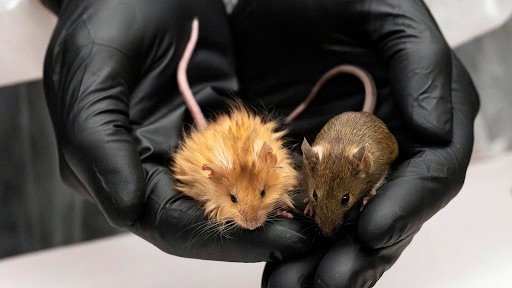compiled by Elmili TK
A team of researchers attempting to bring back the woolly mammoth has successfully engineered a mouse with thick, woolly fur.
Colossal Biosciences, a Texas-based biotech company, first announced its ambitious plan in 2021 to resurrect extinct species, including the woolly mammoth and later the dodo bird. The project has since attracted investors, media attention, and a fair share of skepticism.
Rather than directly reviving these extinct animals, the company has focused on identifying their key genetic traits and introducing them into existing species, according to CEO Ben Lamm. While some scientists believe this research could aid conservation efforts, others remain skeptical about its true impact.
On Tuesday, Colossal Biosciences revealed that its researchers had successfully edited seven genes in mouse embryos, resulting in a mouse with dense, woolly hair. The team has nicknamed this extra-furry creation the “colossal woolly mouse.”
Their ultimate goal is to modify Asian elephants, the closest living relatives of the woolly mammoth, by giving them mammoth-like traits. However, some experts argue that this approach is not the same as truly reviving an extinct species.
“You’re not actually resurrecting anything—you’re not bringing back the ancient past,” said Christopher Preston, an environmental ethics professor at the University of Montana who was not involved in the study. “You might be able to alter the hair pattern of an Asian elephant or adapt it to the cold, but it’s not bringing back a woolly mammoth. It’s changing an Asian elephant.”
The results of the study have yet to be published in a peer-reviewed journal or reviewed by independent scientists.
Vincent Lynch, a biologist at the University of Buffalo who was also not involved in the research, acknowledged the breakthrough, calling it “technologically pretty cool.”
In addition to developing a thick coat of fur, the modified mouse also displayed an enhanced fat metabolism, a trait believed to help with cold resistance—both characteristics linked to the woolly mammoth’s ability to survive in icy environments.
Colossal Biosciences’ chief scientist, Beth Shapiro, explained that these genetic variations already exist in some modern mice. “We simply combined them all into a single mouse,” she said.
The team started with mice to refine their process before attempting to modify the embryos of Asian elephants. However, as an endangered species, Asian elephants are subject to strict regulations, and the company acknowledges that significant legal and ethical hurdles must be overcome before moving forward.

 English
English






































